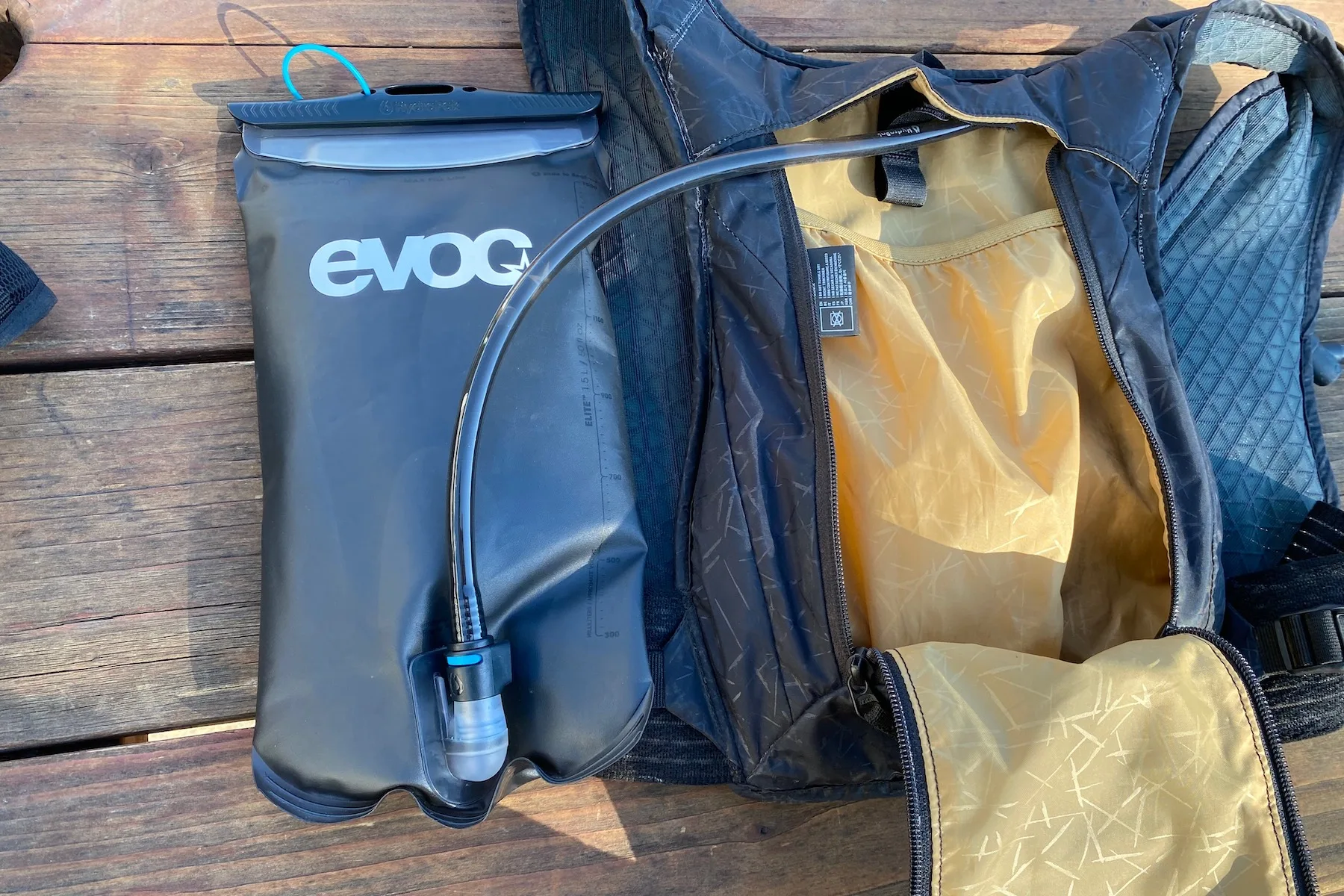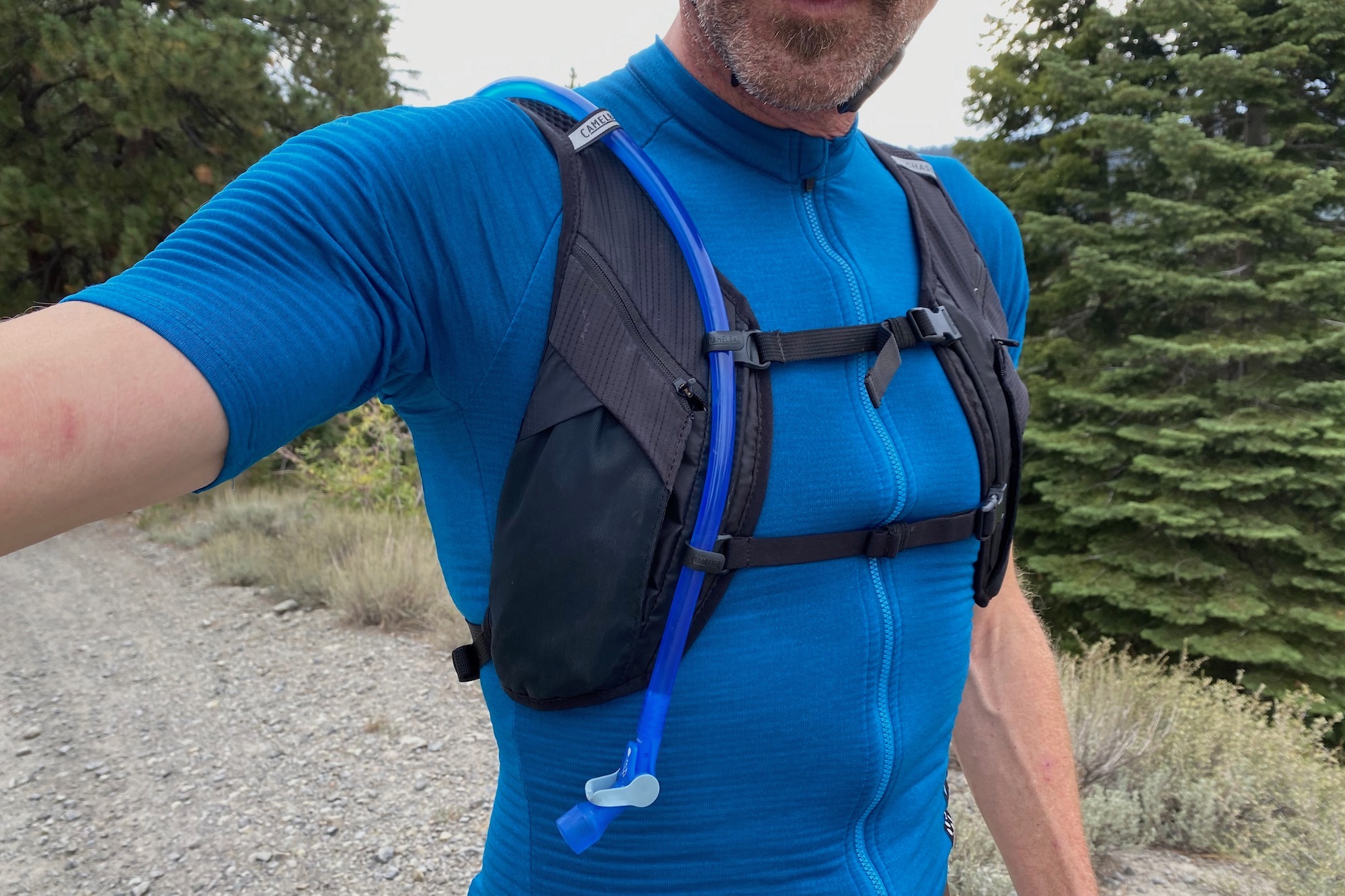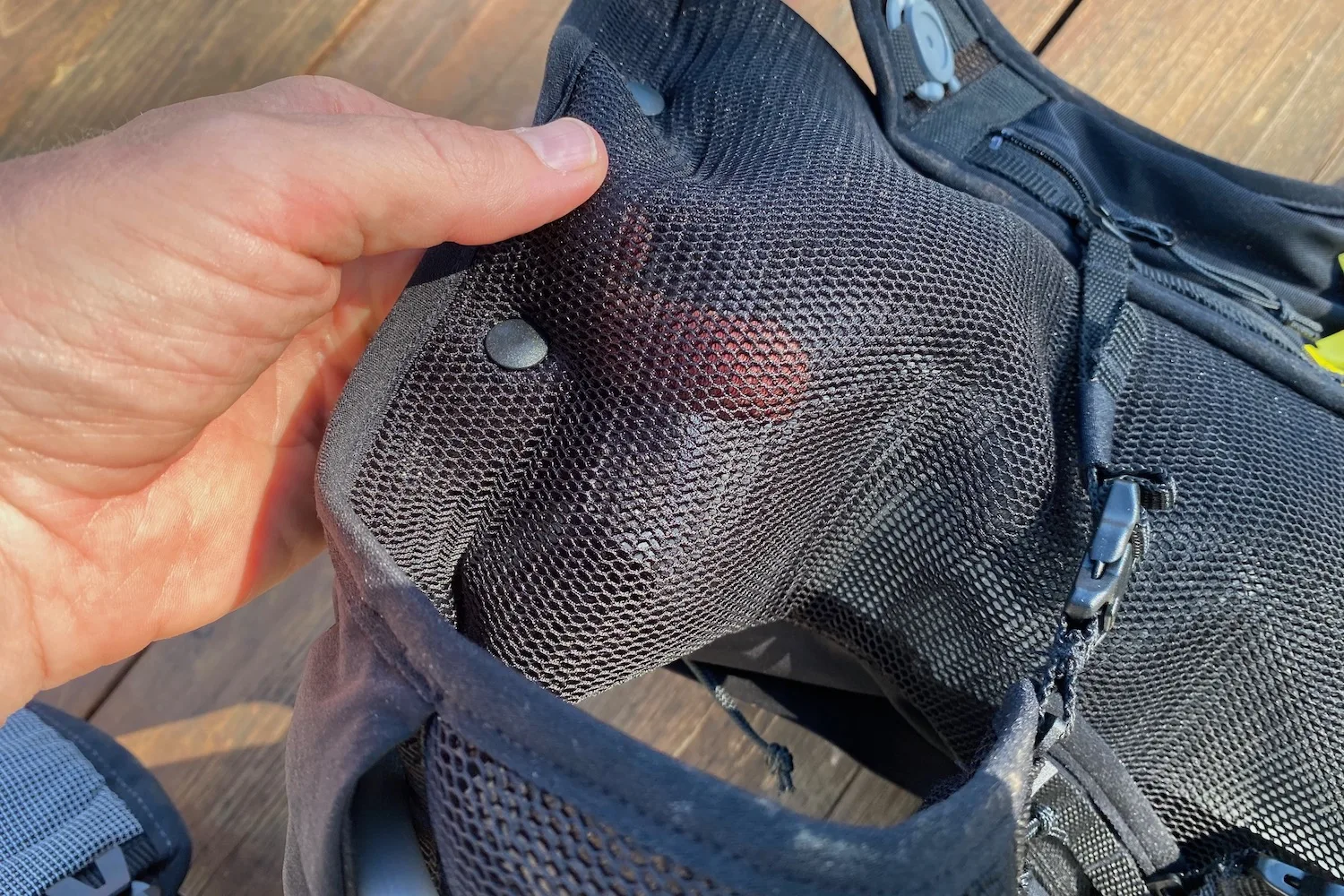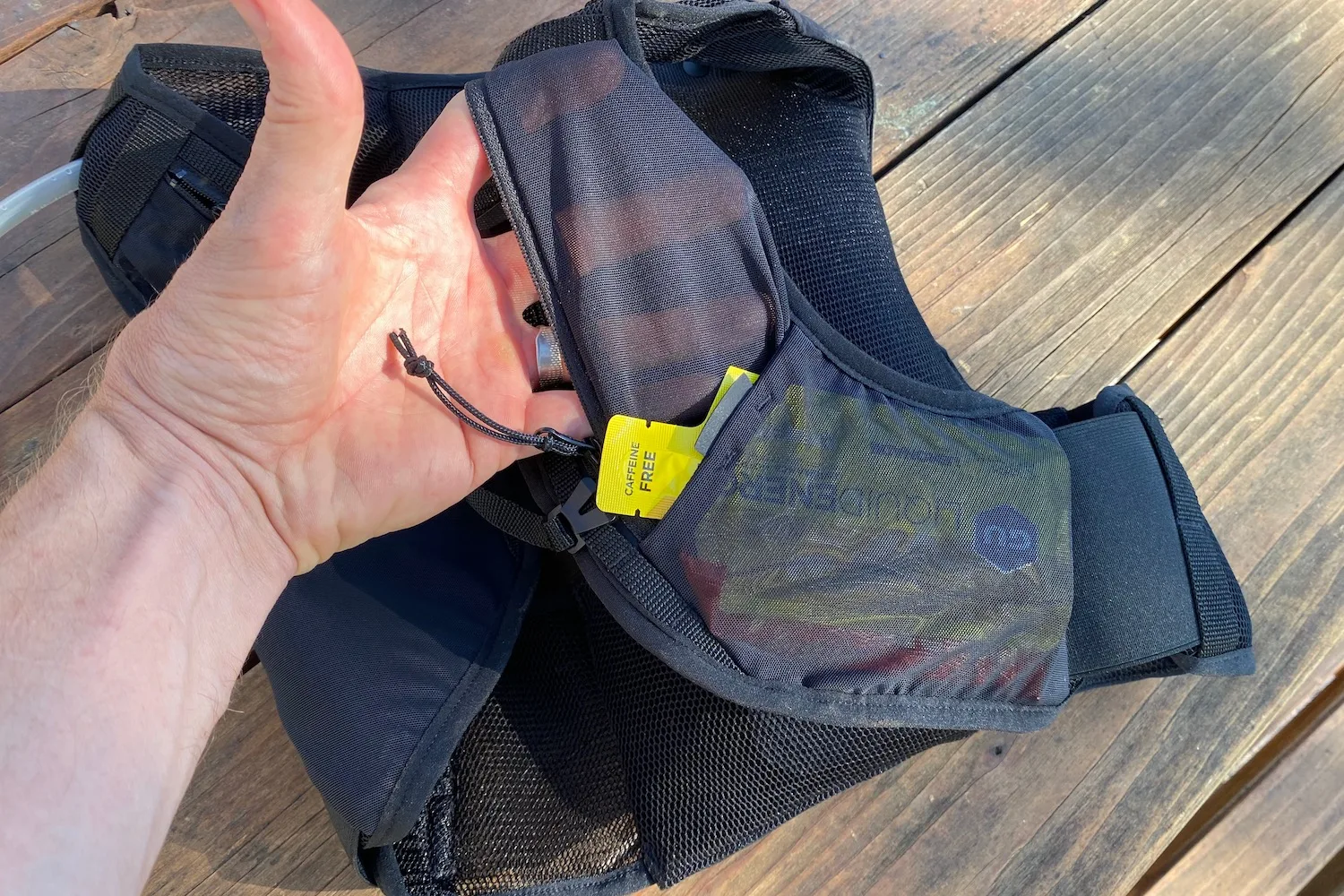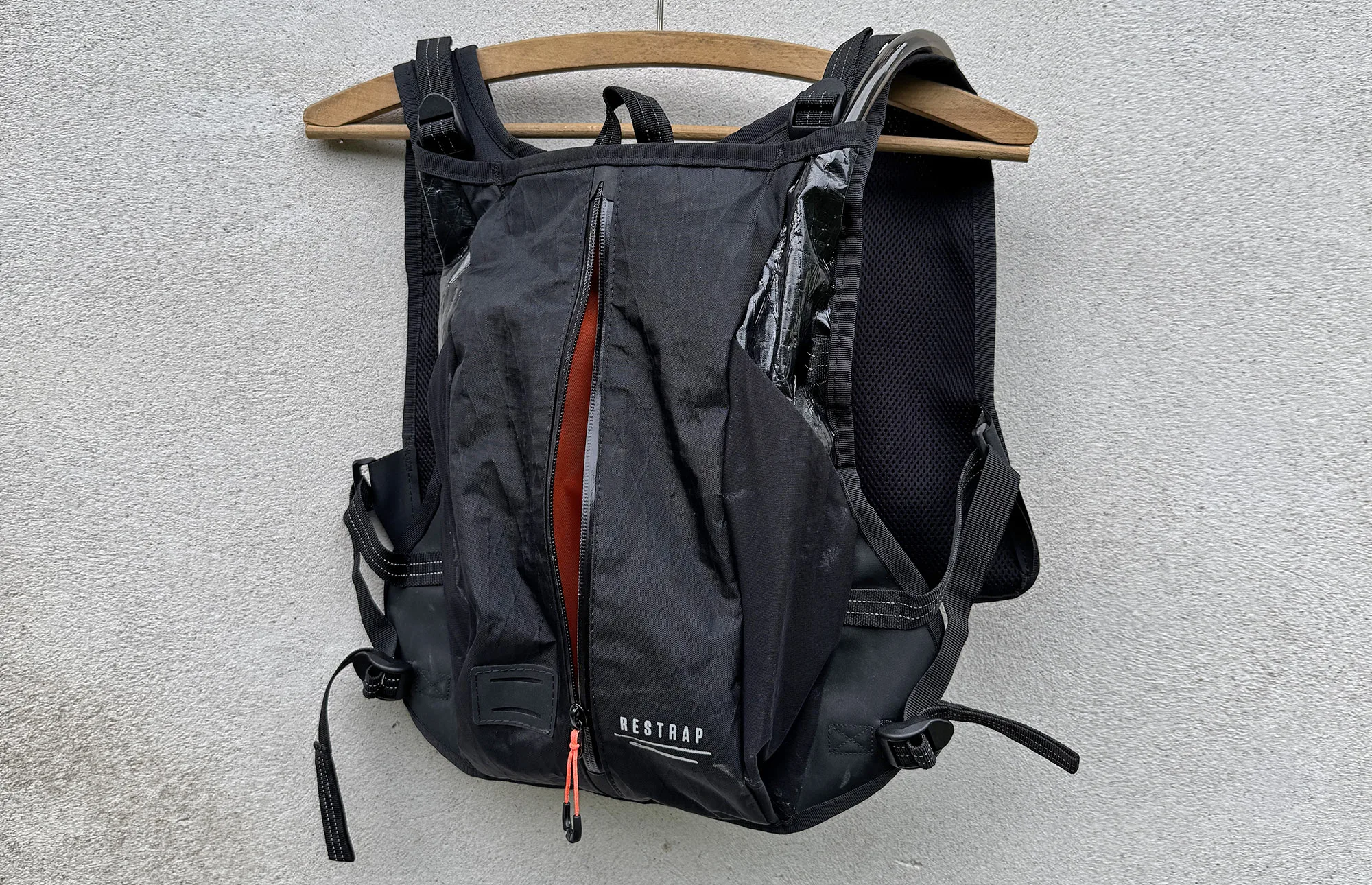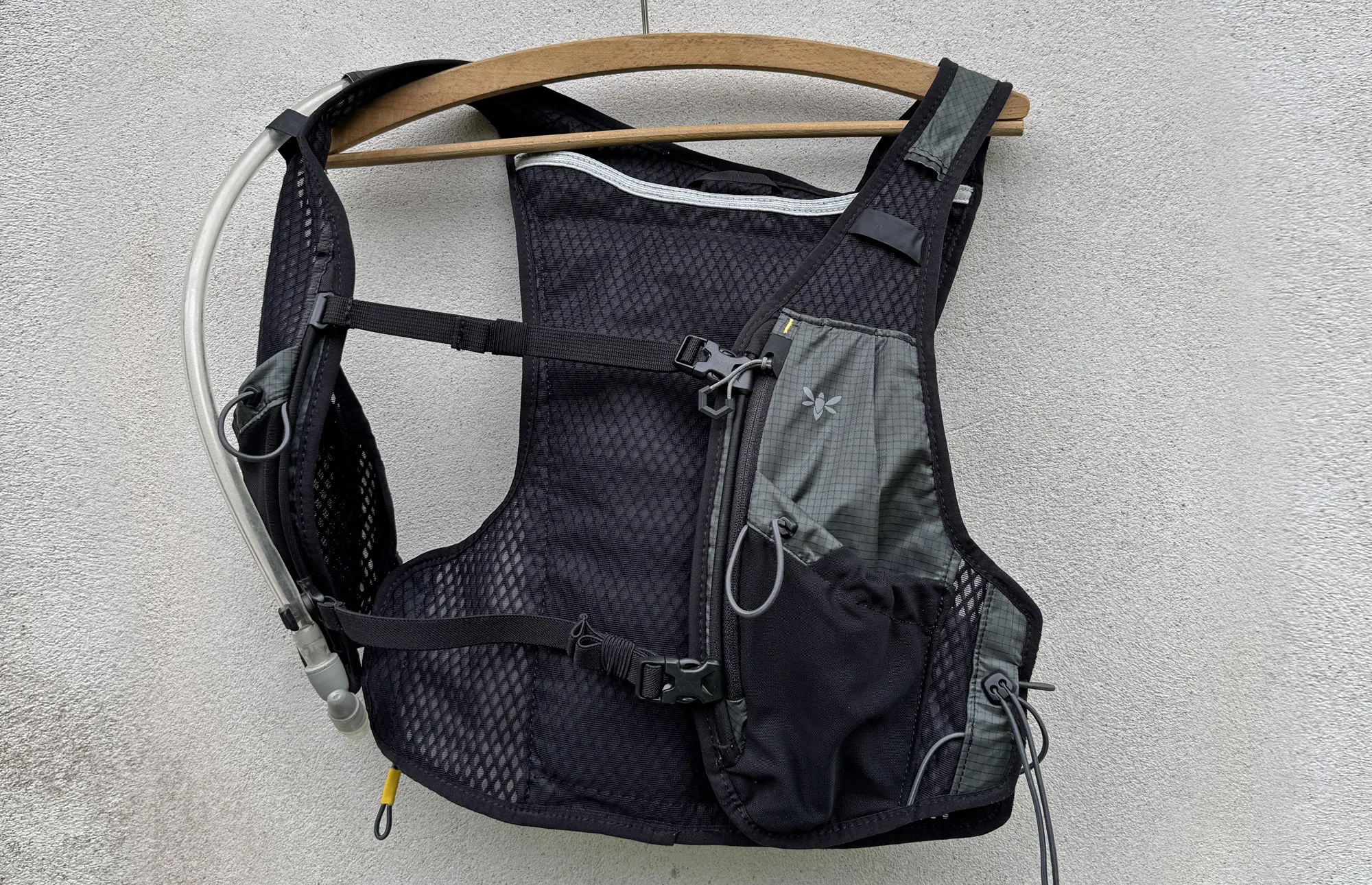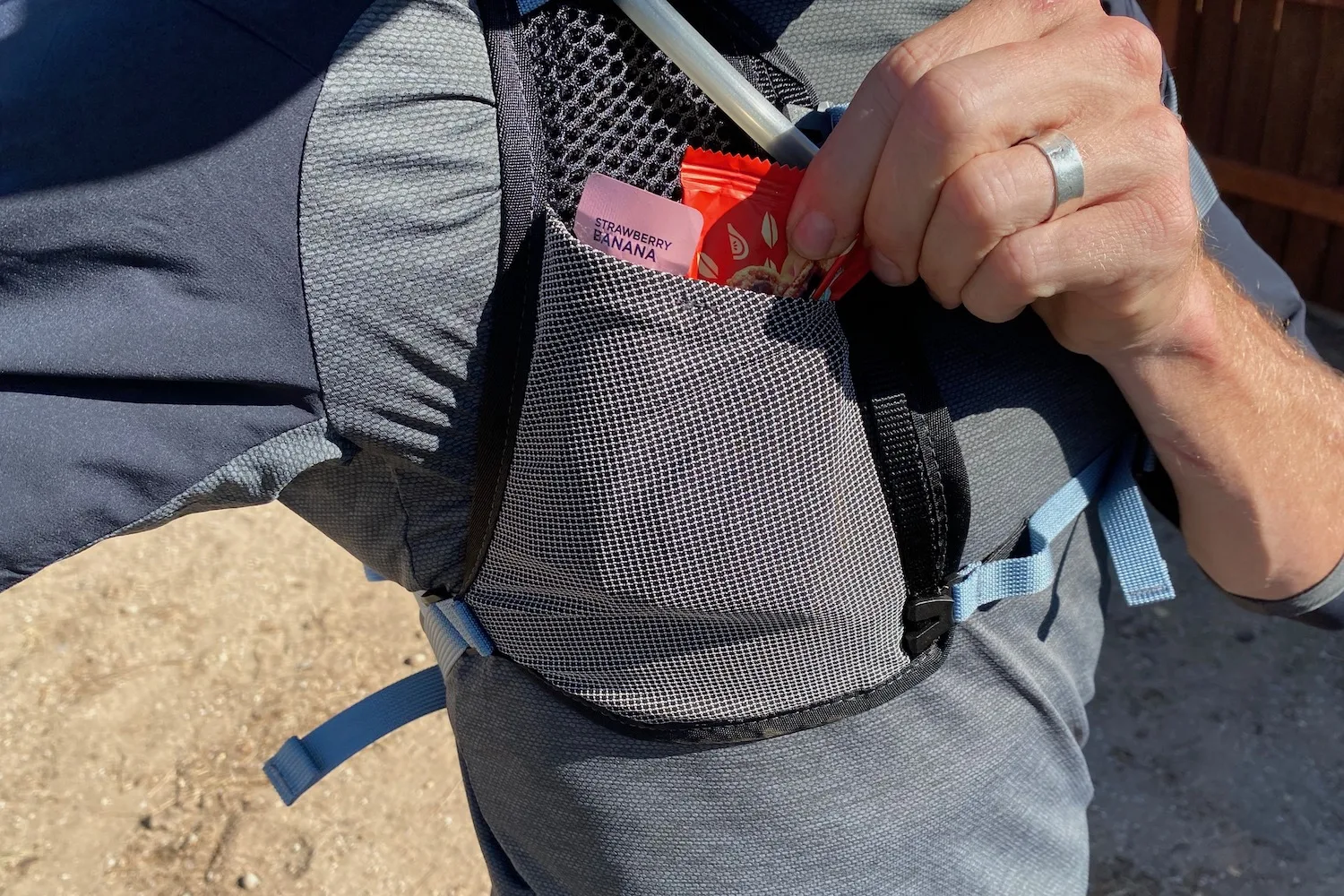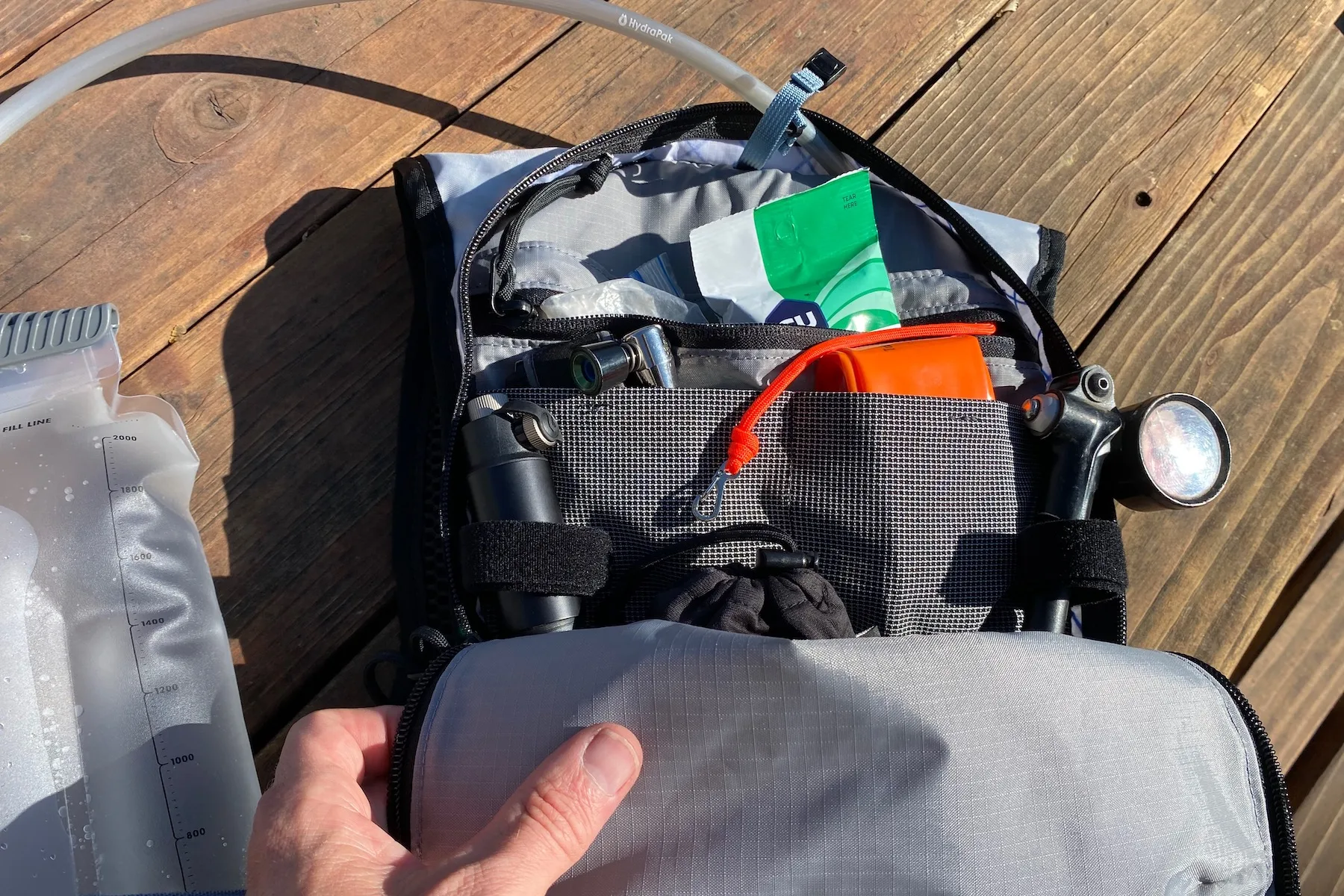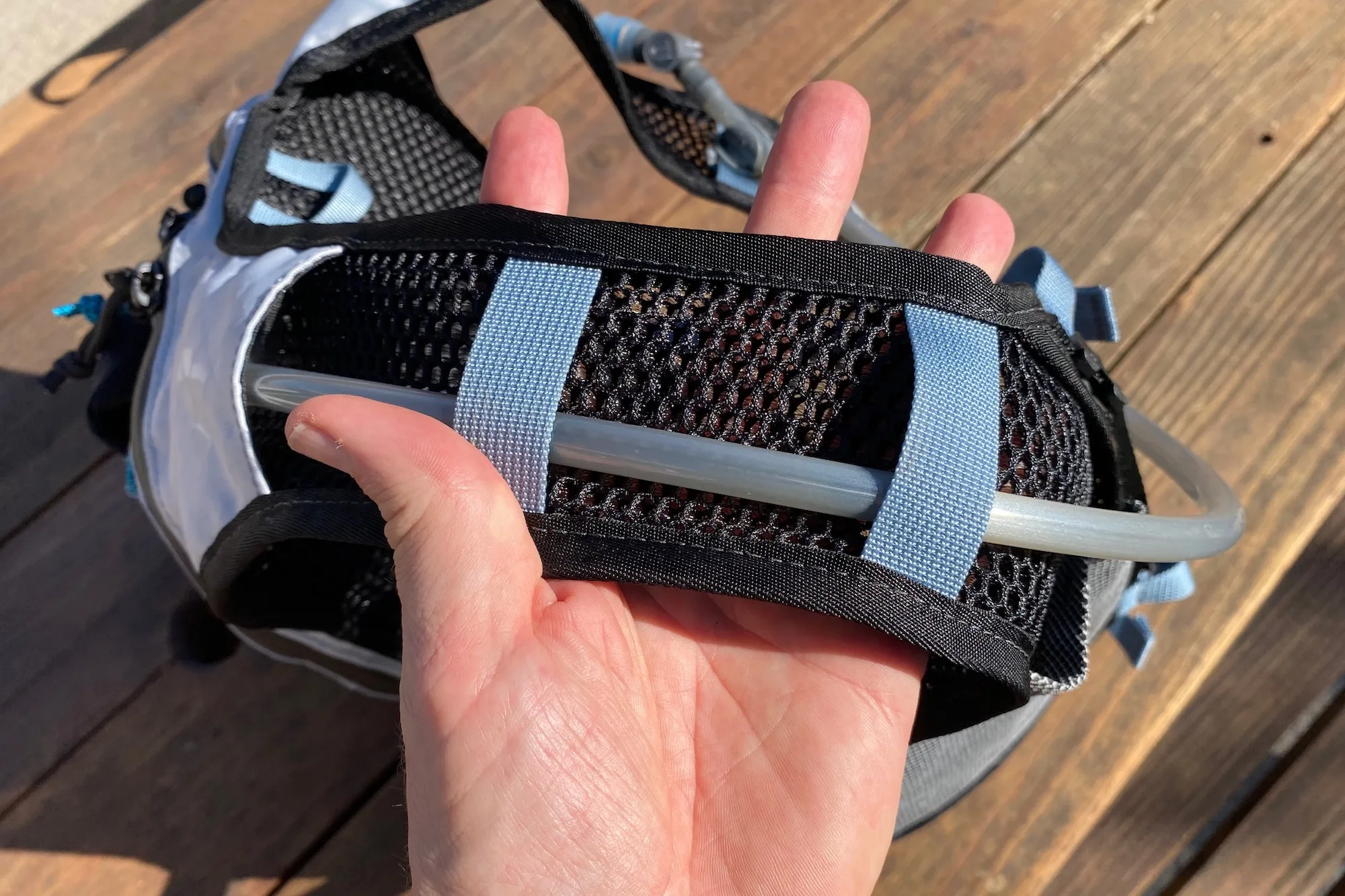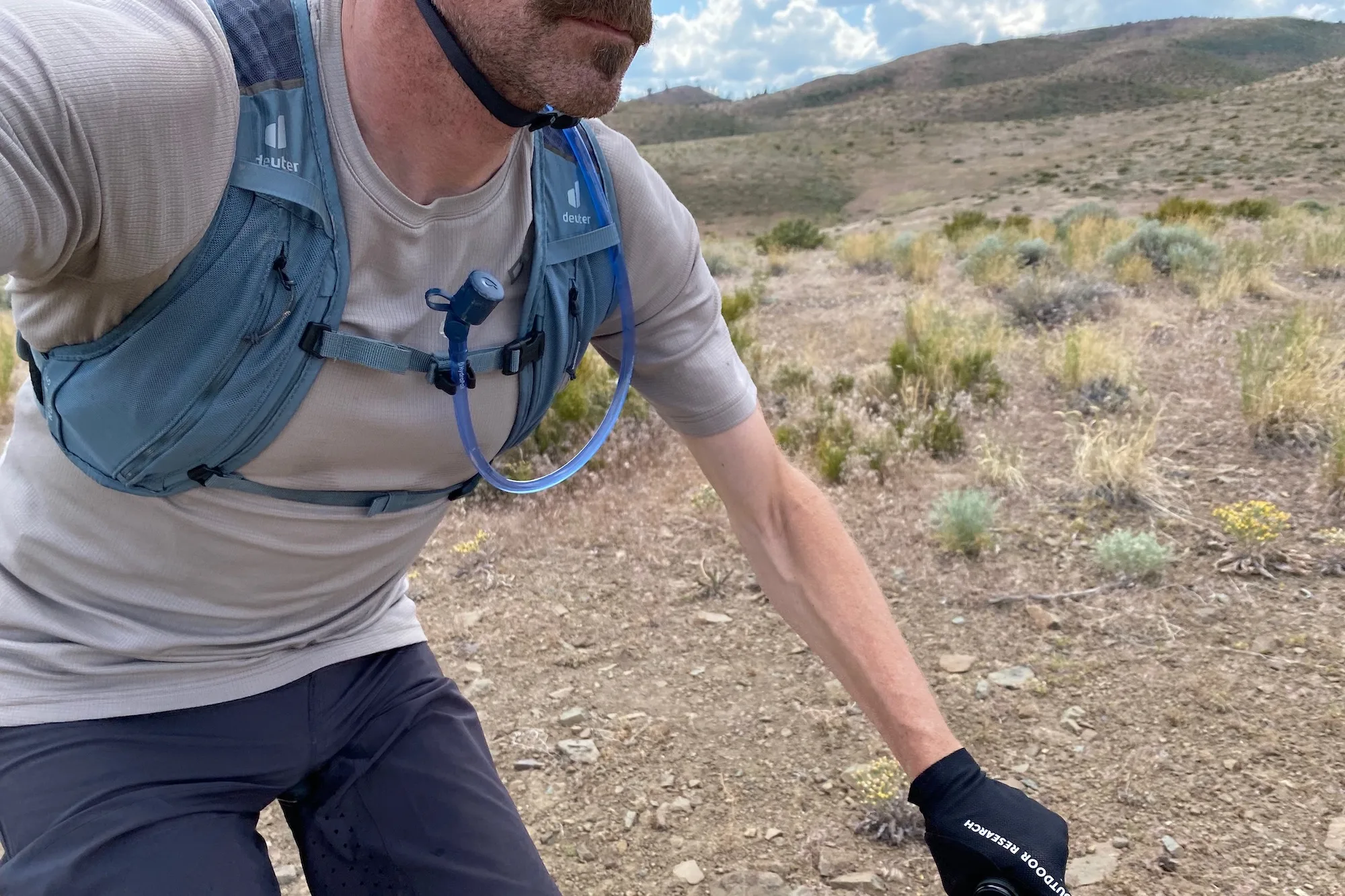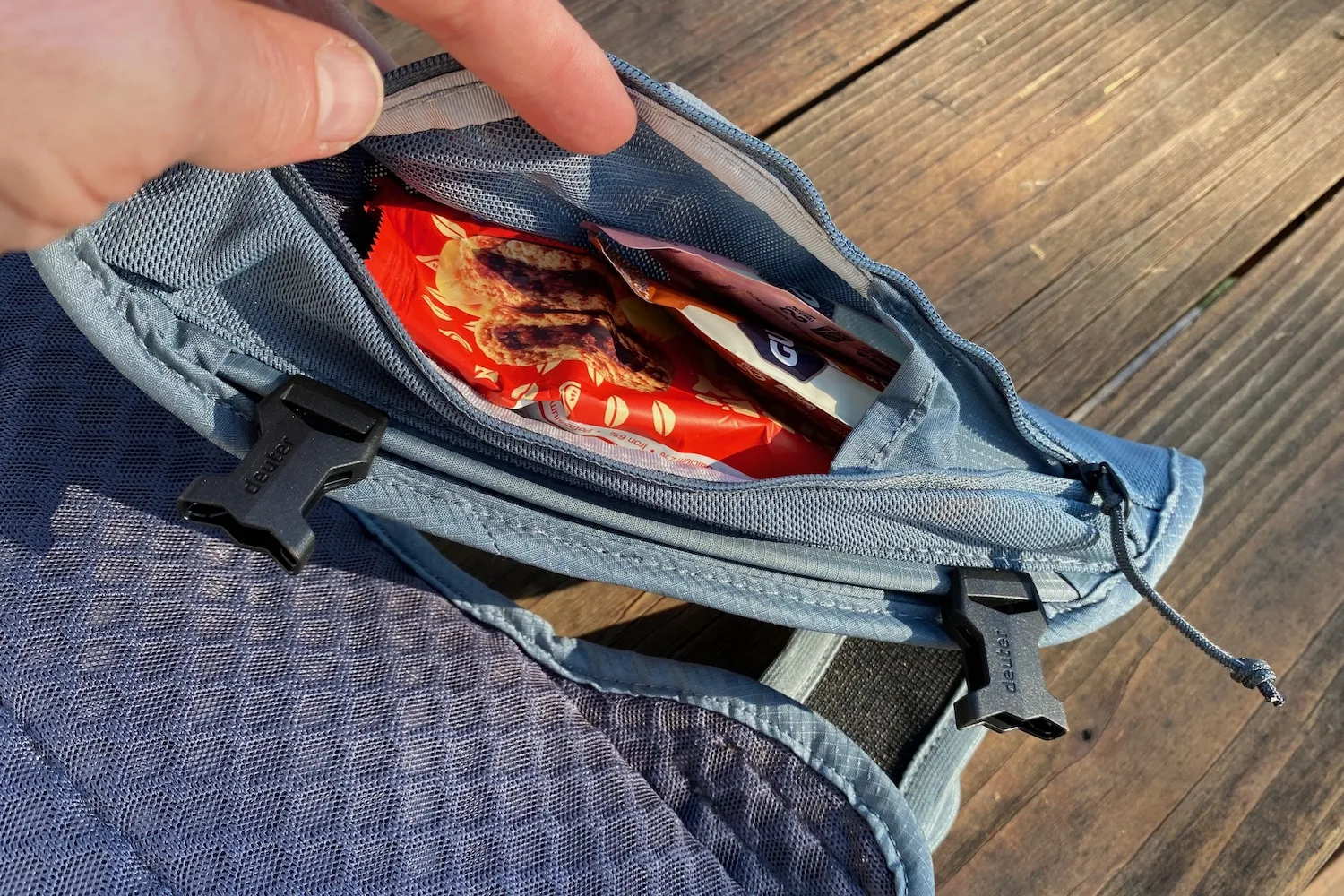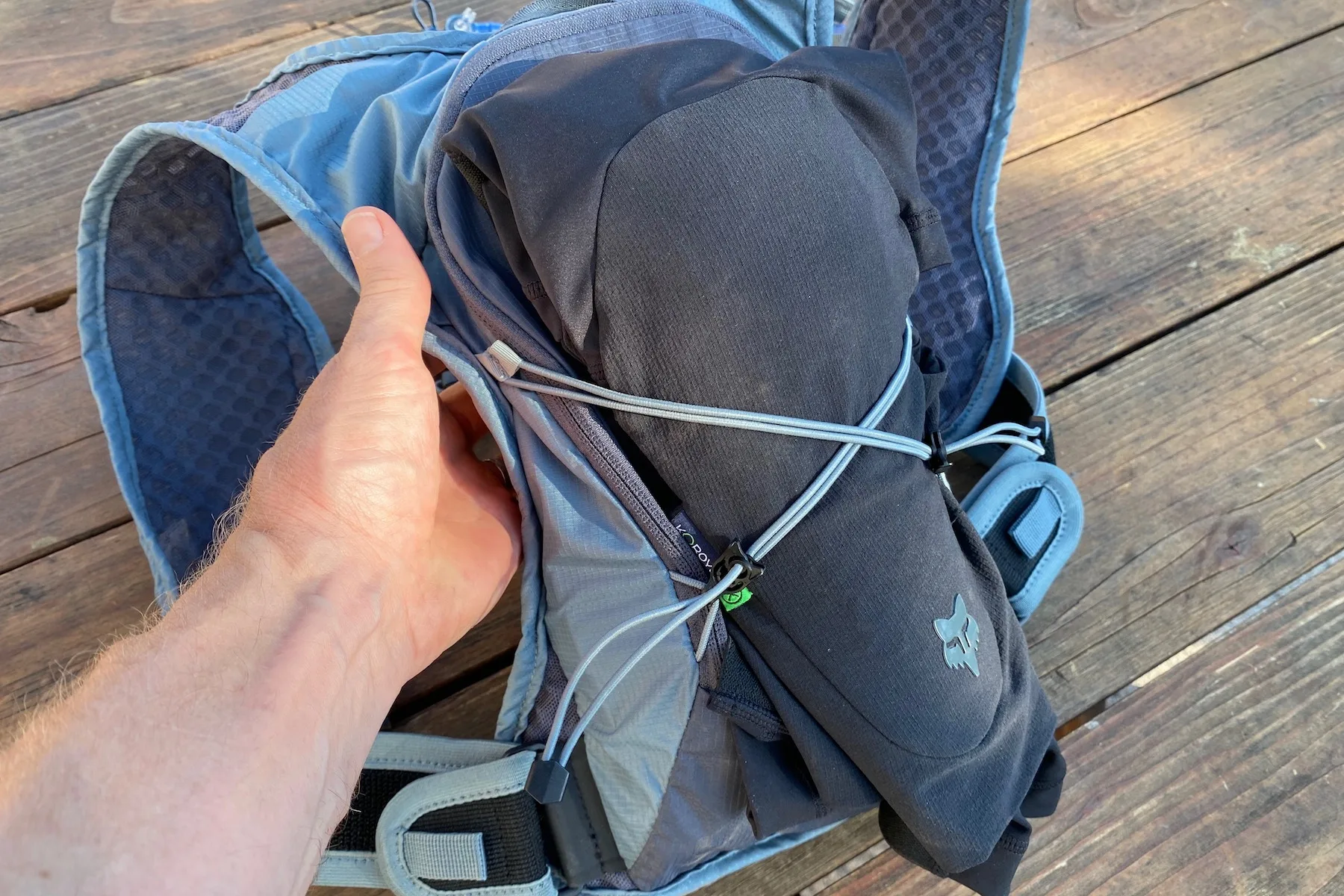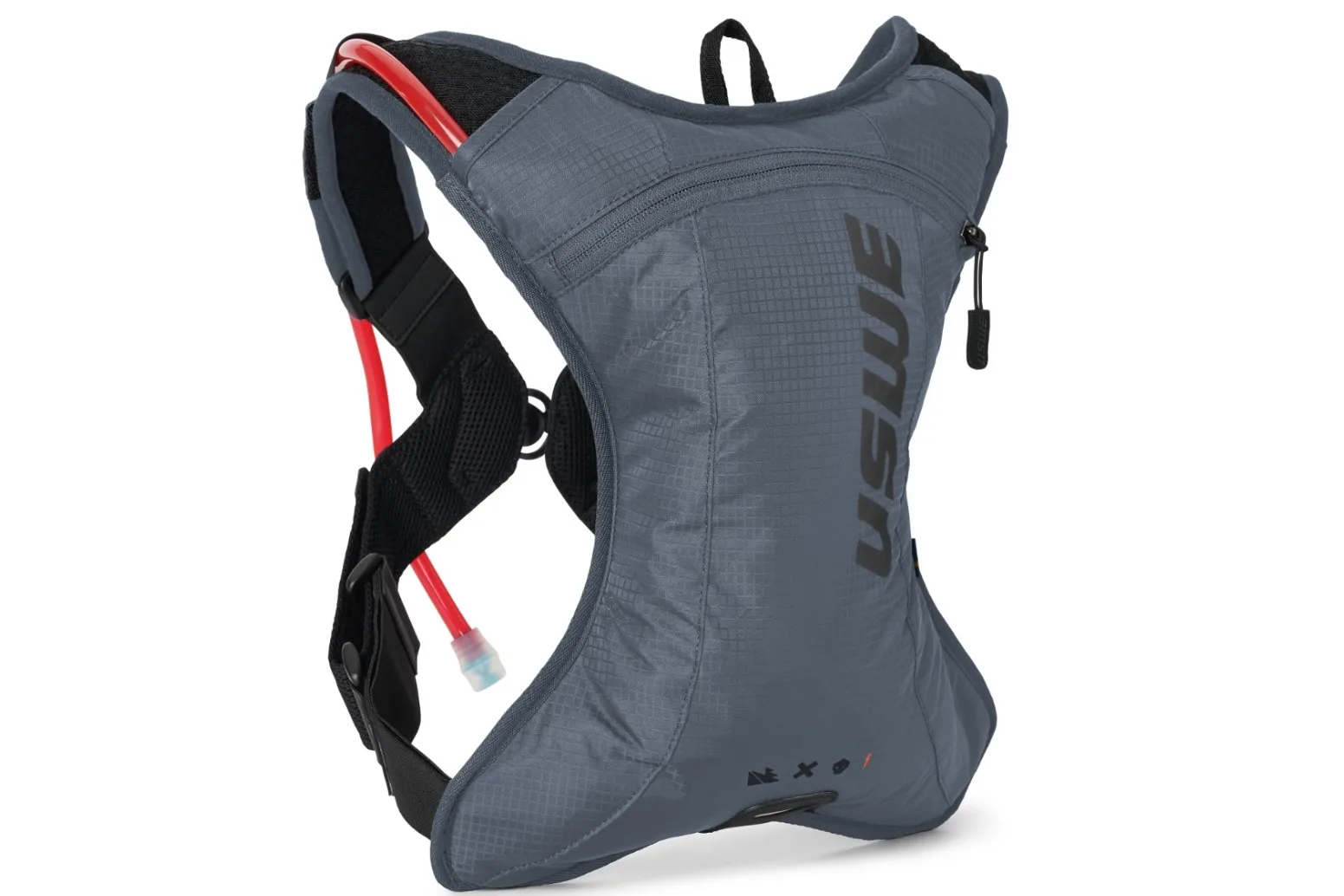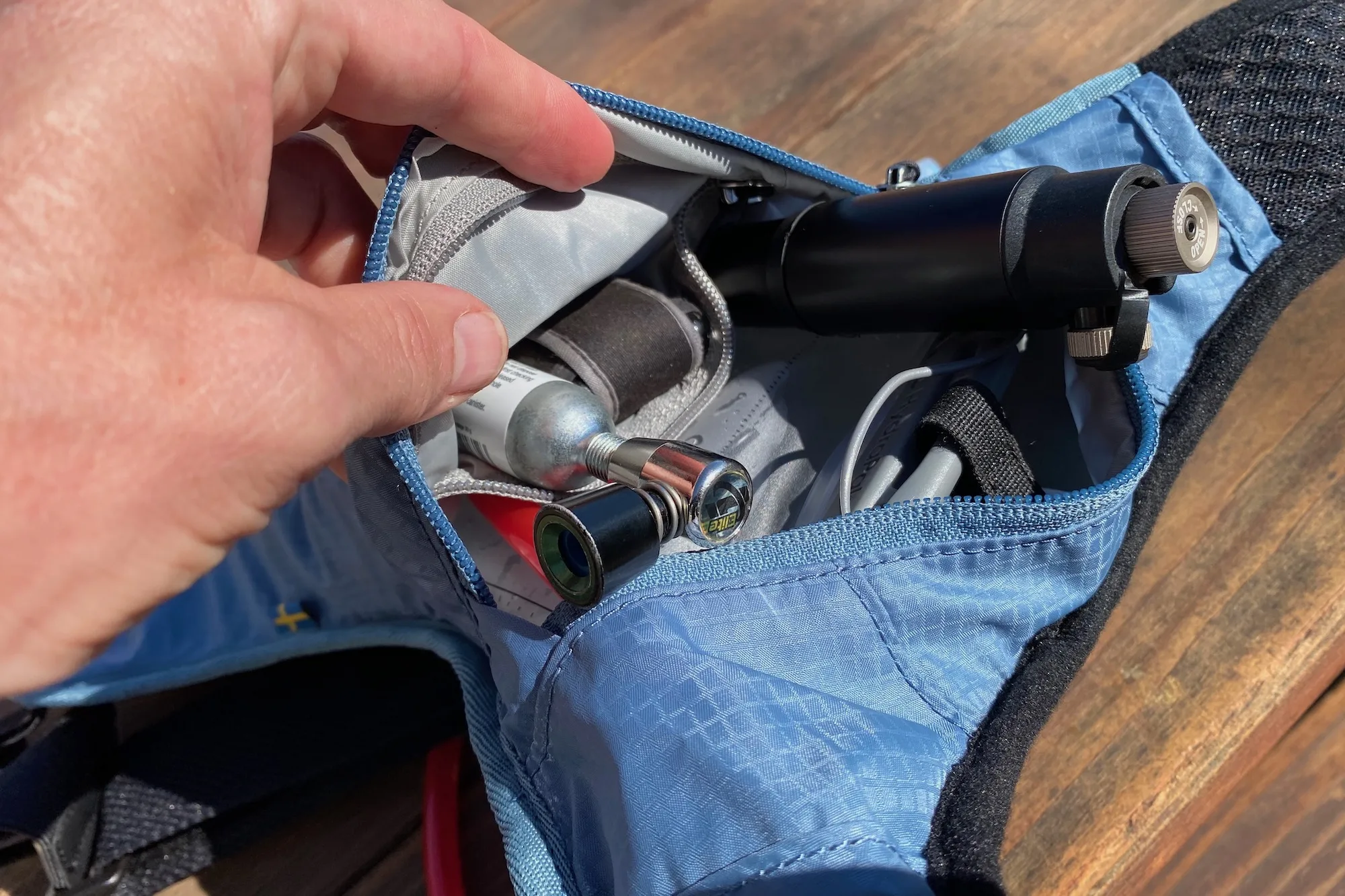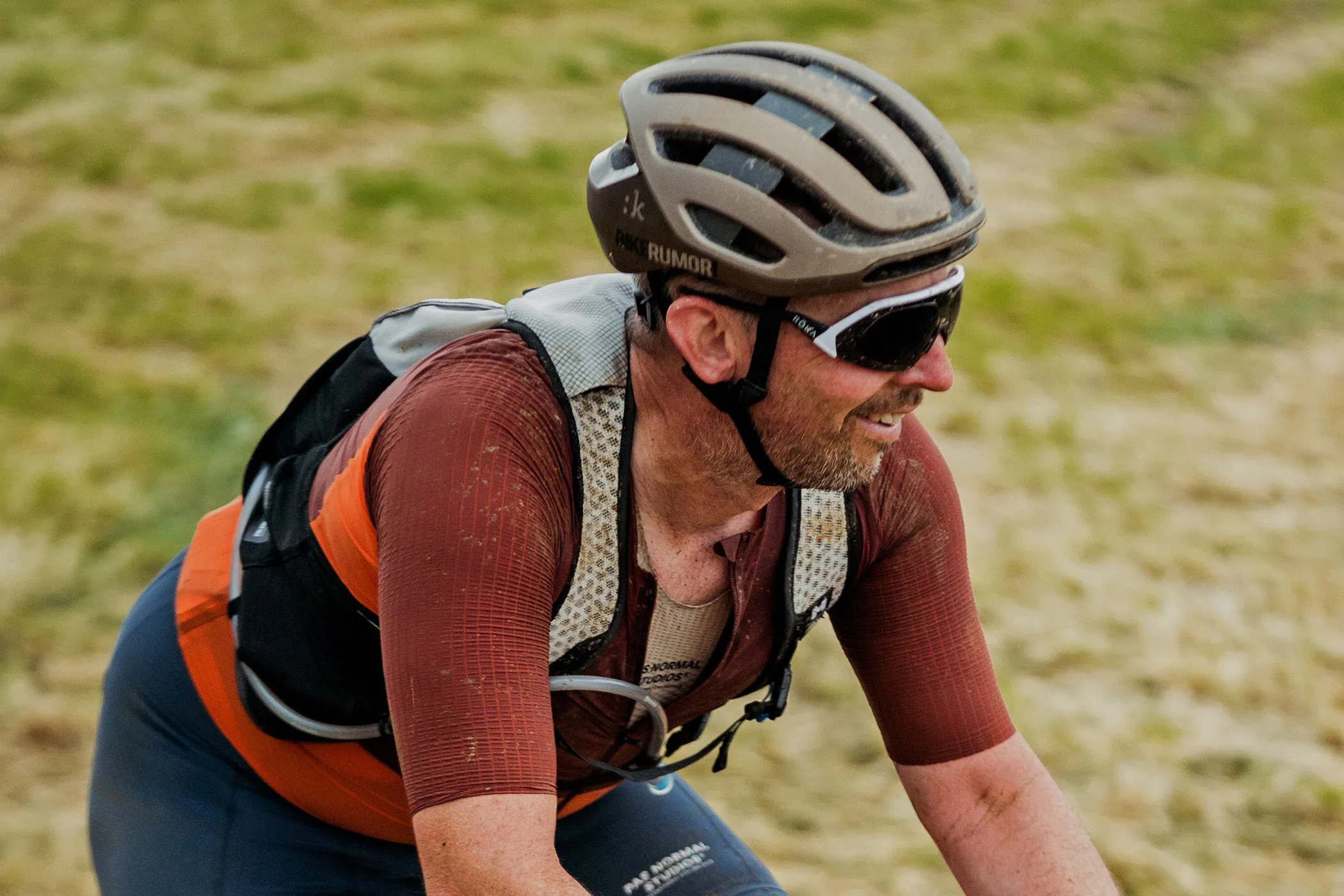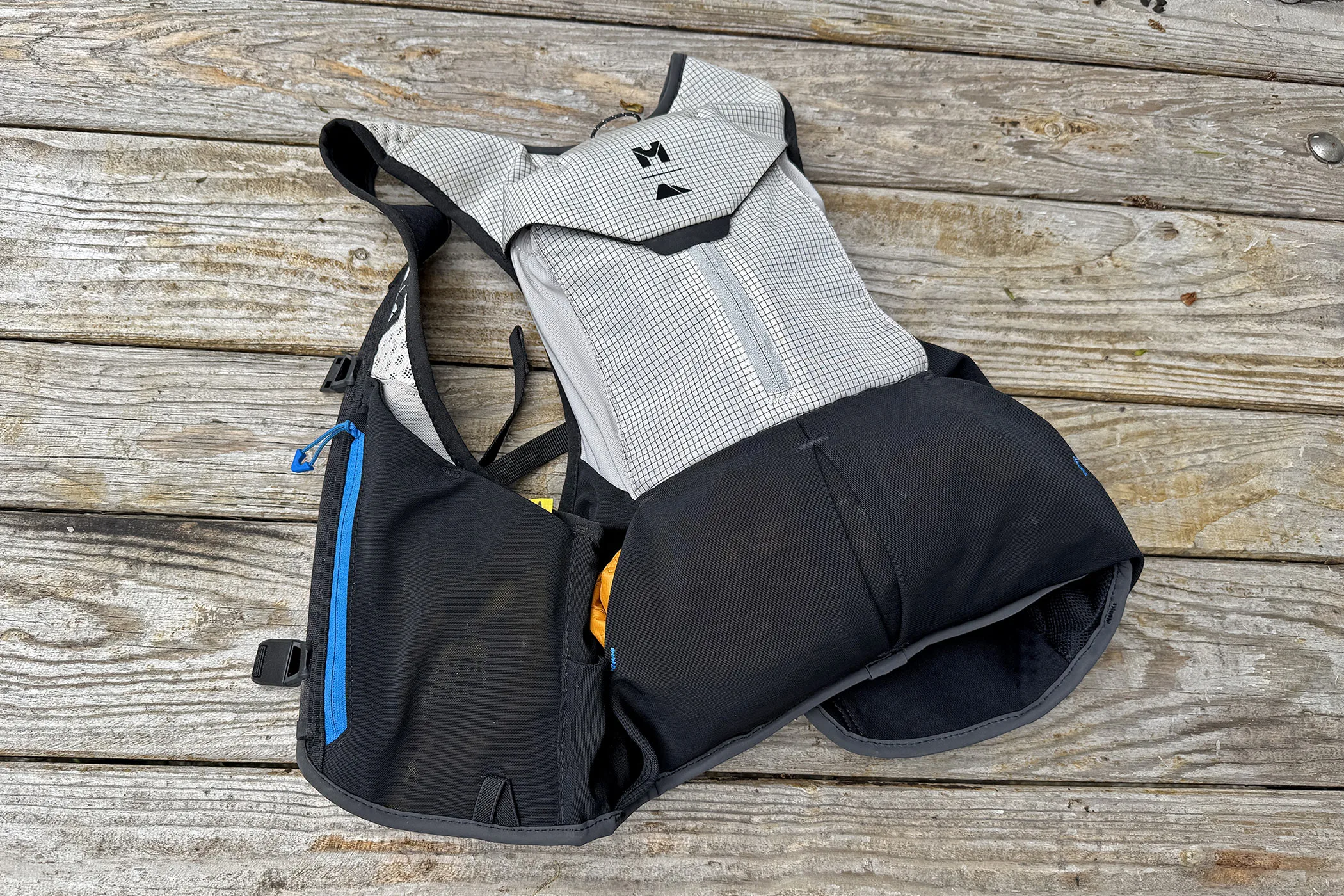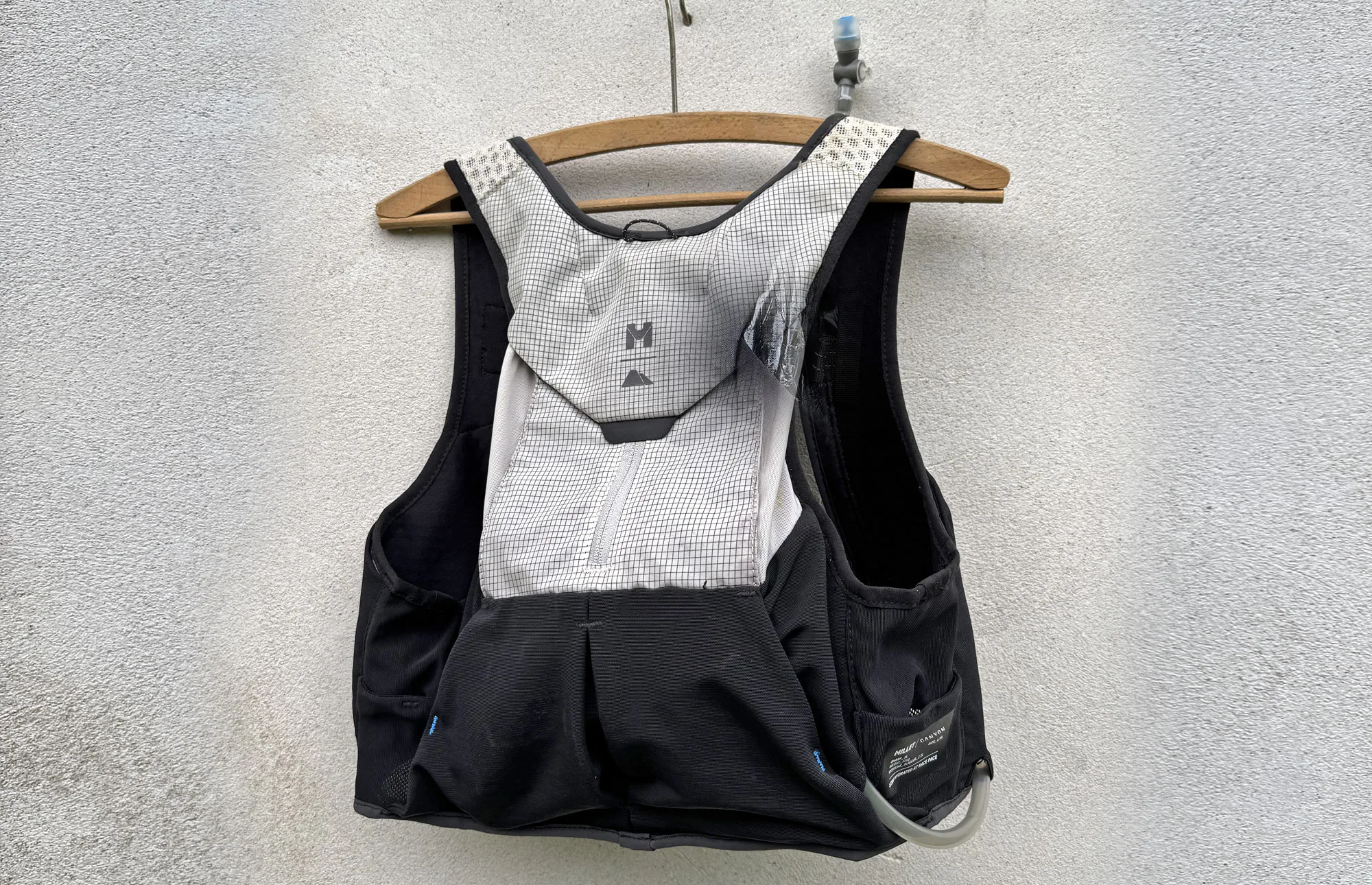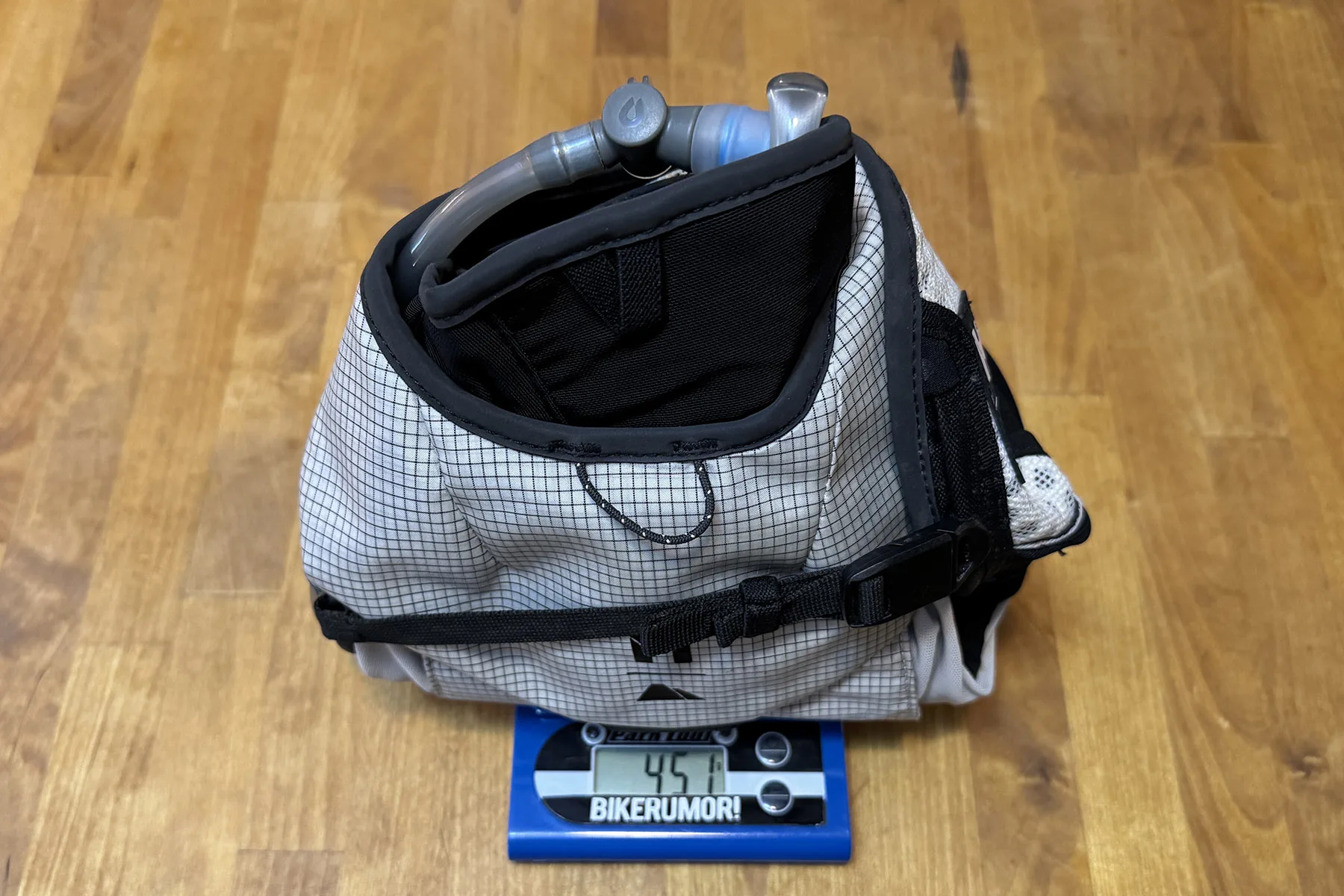For cyclists of all types, one of the most recent hydration systems to gain popularity is the hydration vest — also known as a cycling vest, hydration pack, or vest pack.
Of course, hydration vests are not a new concept. Runners have been using vest-style packs for many years, as have plenty of savvy, trend-setting cyclists. While they are similar to more traditional hydration backpacks, the vest-style design has some distinct advantages. Most notably, the small footprints and vest-style straps result in impressive stability. They also make it easy to drink while riding, carry tools and other gear, and keep some essentials easily accessible, too.
With their growing popularity, the number of cycling hydration vests on the market is increasing in kind. To help sift through the myriad options, our editors rounded up a handful of models for testing and comparison. For the past months and years, we’ve cycled through these packs on our daily rides while considering important factors like fit, comfort, adjustability, stability, storage, pockets, and general ease of use. We’ve got recommendations to point you in the right direction if you’re considering “investing” in a hydration vest for yourself.
Editor’s note: This guide was updated on December 22, 2025, with the addition of the affordable, low-volume CamelBak Chase Race 4 hydration vest.
The Best Cycling Hydration Vests of 2026
Evoc Hydro Pro 1.5 – 1.5L Bladder
- MSRP: $130
- Weight (incl. bladder): 354 g
- Storage capacity: 1.5 L (3 L and 6 L options available)
- Front pockets: 1 zippered and two stretch mesh
- Water capacity: 1.5 L bladder included
- Sizes: One size (33.5" to 47")
- Fit adjustments: Adjustable side straps, and two adjustable sternum straps
- Colors: Black, Steel, Dark Olive
Pros
- Excellent front pockets
- Super stable
- Streamlined
- Simple but effective design
- No quirks – easy to get along with
- Surprisingly light
Cons
- Minimal storage capacity (other sizes available)
- Grey hose hides cleanliness
CamelBak Chase Race 4
- MSRP: $126
- Weight (incl. bladder): 465 g
- Storage capacity: 4 L (including 1.5 L bladder)
- Front pockets: 2 zippered, 2 stretch
- Water capacity: Crux 1.5 L bladder included
- Sizes: One size, fits chests 28-46"
- Fit adjustments: Adjustable side straps, and two adjustable sternum straps
- Colors: Black, Moroccan Blue
Pros
- Competitively priced
- Organized storage approach
- Fairly good breathability
- Large range of fit adjustment
Cons
- Limited gear capacity (CamelBak makes a larger size)
- Short hose length and downward orientation
- Awkward fit when fully stuffed
Velocio Hydration Pack
- MSRP: $199
- Weight (incl. bladder): 285 g (size L/XL)
- Storage capacity: Not specified (approx 1.5 L)
- Front pockets: Two zippered and two stretch mesh
- Water capacity: 1.5 L bladder included
- Sizes: S, M, L, XL
- Fit adjustments: Two adjustable sternum straps
- Colors: Black, Spruce, Madder Green
Pros
- Super lightweight
- More breathable than most
- Minimal race-oriented design
Cons
- Expensive
- Runs kinda small
- No side adjustability
Restrap Race Hydration Vest
- MSRP: $235 / 174€
- Weight (incl. bladder): 521g S/M
- Storage Capacity: 5.5L
- Water Capacity: 2L roll-top bladder included
- Sizes: Two sizes
- Colors: Black
- Front: 2 mesh chest pockets plus zipper phone chest pocket
- Rear: 1 large zippered rear pocket, plus stretch mesh side pockets that can carry a water bottle each
- Hose: ambidextrous top routed hydration hose with movable magnetic clip
- Fit adjustability: 2 adjustable height chest straps with a whistle, 3-point cinch straps
- Extras: silver & yellow rear reflective details
Pros
- Made in the UK
- Waterproof main body fabric
- Orange pocket linings make it easy to find items inside
- Wide fit range with secure side straps
- Easy short or long hydration hose adjustability
Cons
- Limited breathability
- Relatively heavy
- Expensive
Apidura Racing Hydration Vest
- MSRP: $217 / 167€
- Weight (incl. bladder) 406g L/XL:
- Storage Capacity: 3.5L S/M or 5L L/XL
- Water Capacity: roll-top 2L hydration bladder included
- Sizes: Two sizes
- Colors: Grey
- Front: 2 mesh chest pockets plus zipper phone chest pocket
- Rear: 2 zippered rear pockets
- Hose: top routed hydration hose with magnetic clip fixed to lower chest strap
- Fit adjustability: 2 adjustable height chest straps, side bungees straps
- Extras: silver & yellow rear reflective details
Pros
- Lightweight (even lighter in new generation!)
- Great mesh breathability on back & straps
- Wide range of fit adjustability
- Now comes in all-black to match Apidura Racing Series
Cons
- 1st-gen bungees flap around while riding (since updated with straps on the sides)
- Fixed magnetic holder on lower strap limits hydration hose adjustability
High Above Supernatural
- MSRP: $240
- Weight (incl. bladder): 575 g
- Storage capacity: 6 L total, 4 L cargo
- Front pockets: Two stretch mesh pockets
- Water capacity: 2 L bladder included
- Sizes: One size
- Fit adjustments: Two adjustable sternum straps, adjustable side straps
- Colors: Black, glacier gray
Pros
- Made from very durable materials
- Great weather resistance
- Plenty of well-organized storage space
- Very stable
- Made in the USA
Cons
- Very expensive
- Slightly heavier weight
Other Cycling Hydration Vests Worthy of Consideration
- MSRP: $135
- Weight (incl. bladder): 508 g
- Storage capacity: 5 L
- Front pockets: Two zippered pockets
- Water capacity: 2 L bladder included
- Sizes: One size
- Fit adjustments: Two adjustable sternum straps, adjustable side straps.
- Colors: Grove-ivy, graphite-shale
Pros
- Well-organized storage
- Great mid-size capacity
- Streamlined fit
- Stable
Cons
- Not the lightest
- Awkward hose keeper position
- Might be a tight fit for those with larger chests
- MSRP: $110
- Weight (incl. bladder): 385 g
- Storage capacity: 2 L (numerous other options)
- Front pockets: None
- Water capacity: 1.5 L bladder included
- Sizes: One size (chest circumference 33” to 43”)
- Fit adjustments: Adjustable length shoulder and side straps
- Colors: Black, blue, orange, pink, red flannel, bronze flannel
Pros
- Affordable
- Low profile
- Relatively light
- Simple and effective
- Highly adjustable
Cons
- Fixed hose attachment, no nozzle lock
- Very little gear storage space (many other models/sizes available)
- No front/chest pockets
- MSRP: $170 / 170€
- Weight (incl. bladder) 454g L/XL:
- Storage Capacity: 3L
- Water Capacity: roll-top 2L HydraPak hydration bladder included
- Sizes: Two sizes
- Colors: White/Grey
- Front: 2 mesh chest pockets plus zipper phone chest pocket
- Rear: 1 zippered rear pocket, large pass-through mesh pocket
- Hose: right-only top or bottom routed hydration hose
- Fit adjustability: 2 adjustable height chest straps, side bungees straps
Pros
- Secure, stable fit
- Streamlined
- Rear mesh pocket is convenient to stuff large items while riding (clothing or extra bottles)
Cons
- Limited adjustability, especially for larger riders
- White mesh is difficult to clean
Cycling Hydration Vests Comparison Chart
| Model | MSRP | Weight (incl. bladder) | Storage capacity | Water capacity |
|---|---|---|---|---|
| Evoc Hydro Pro 1.5 | $130 | 354g | 1.5 L cargo (3 L and 6 L options) | 1.5 L bladder incl. |
| Camelbak Chase Race 4 | $126 | 465g | 4 L total, 2.5 L cargo | 1.5 L bladder incl. |
| Velocio Hydration Pack | $199 | 285g (L/XL) | not specified: approx. 1.5 L | 1.5 L bladder incl. |
| Restrap Race Hydration Vest | $235 | 521g (S/M) | 5.5 L | 2 L bladder incl. |
| Apidura Racing Hydration Vest | $217 | 406g (L/XL) | 3.5 L (S/M), 5 L (L/XL) | 2 L bladder incl. |
| High Above Supernatural | $240 | 575g | 6 L total, 4 L cargo | 2 L bladder incl. |
| Deuter Rogla 5 | $135 | 508g | 5 L total, 3 L cargo | 2 L bladder incl. |
| USWE Outlander XC 2L | $110 | 385g | 2 L total. 0.5 L cargo | 1.5 L bladder incl. |
| Canyon x Millet Sharp 3L | $170 | 451g (L/XL) | 3 L | 2 L bladder incl. |
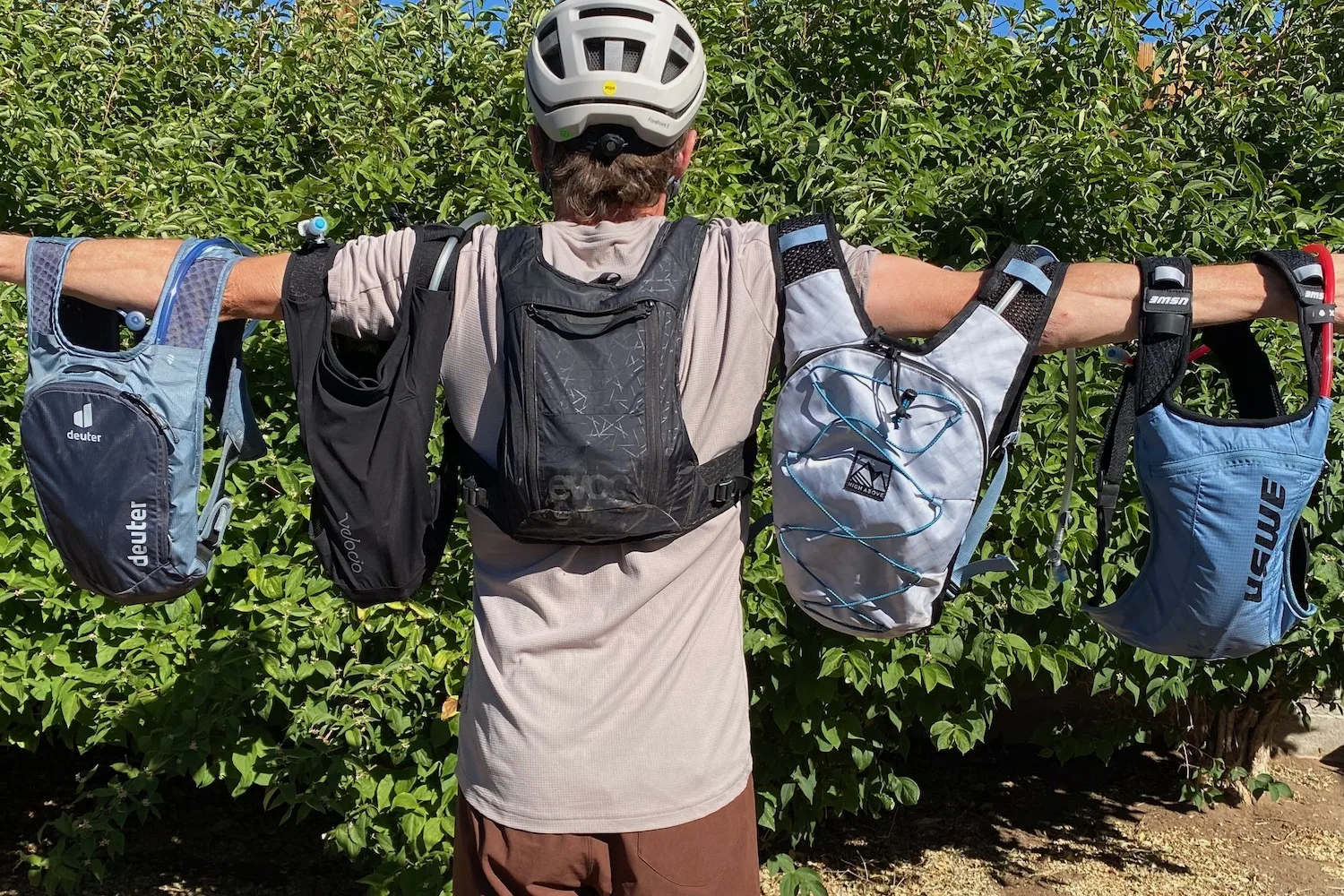
Our Hydration Vest Testers
This buyer’s guide is primarily the product of BikeRumor Editors Jeremy Benson and Cory Benson’s experience using a variety of hydration vests over the past few years. Each of the models listed here has been tested by Jeremy or Cory, and several have also been tested by other members of the BikeRumor team.
Jeremy started riding with a hydration vest three years ago. He picked up an EVOC Hydro Pro 1.5 to help combat the 100-degree F heat forecasted for a two-day race event. Since then, he has grown very fond of the stability and convenience of hydration vests and has been using his EVOC or other models on most gravel or mountain bike rides. In addition to the EVOC Hydro Pro 1.5 that he already had, Jeremy tested the USWE Outlander XC 2L, the Velocio Hydration Pack, the Deuter Rogla 5, the High Above Supernatural, and the CamelBak Chase Race 4.
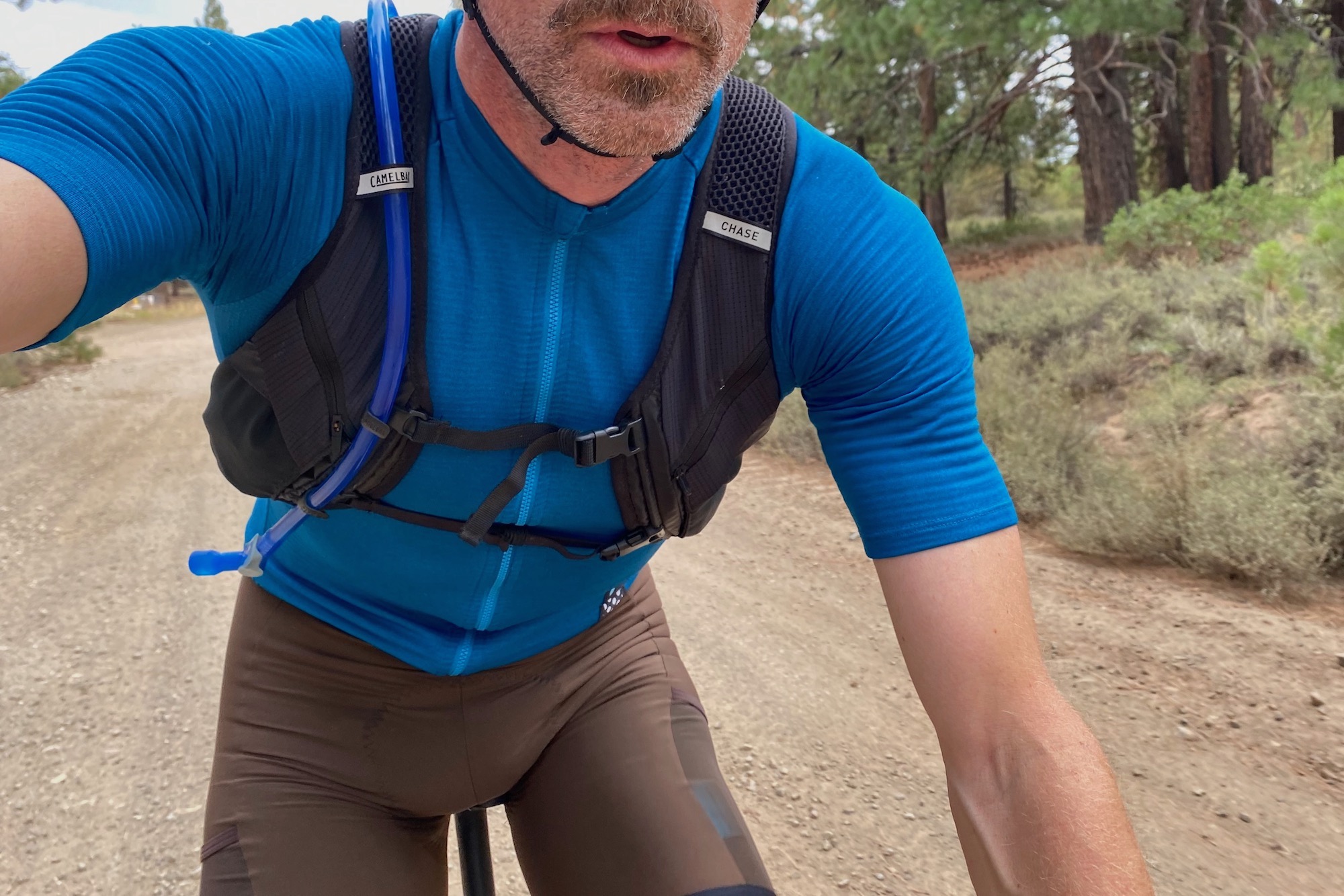
Cory Benson, on the other hand, is a reluctant fan of the hydration vest. For most regular rides, he prefers not to have anything on his back. But for longer adventure rides, or even to ‘race’ longer distances, he feels it’s simply a no-brainer to choose a vest over other wearable hydration systems. Cory finds the stability, low weight, and convenience of vest-style packs to make them an obvious choice over conventional backpack-style packs in most situations. Of the models included in this guide, Cory tested the Apidura Racing Vest, the Restrap Race Vest, and the Canyon x Millet Sharp 3L.
How We Tested Hydration Vests
Both Cory and Jeremy are full time writers, product testers, and reviewers. They ride bikes year round and have spent years scrutinizing and analyzing all sorts of gear and accessories for in-depth reviews. Each model was tested for months, and in some cases years, to examine its performance in the real world on various types of bike rides, terrain, and weather conditions. From casual rides with friends to endurance gravel events and races, these packs were used and abused. With numerous models on hand, Cory and Jeremy switched between the vests in their possession frequently for comparison.
In addition to testing the performance, functionality, stability, and comfort of each model on the bike, we closely examined the materials and construction, pocket layout, adjustability, hydration bladders, and nozzles. In the end, they used their combined experience as the basis for our product recommendations and detailed descriptions of each model. To be clear, we have called out our favorites, but all of the models included on this list are solid options to consider, with some models being better suited for different applications, weather conditions, or storage capacity.
Buying Advice: Cycling Hydration Vest Considerations
While most cycling hydration vests are relatively similar, there are a few factors to consider if you’re planning on “investing.” A couple of the most important considerations are bladder size and gear storage capacity. Of course, whether a pack will fit your body will also play a role in how well it works for you, if at all.
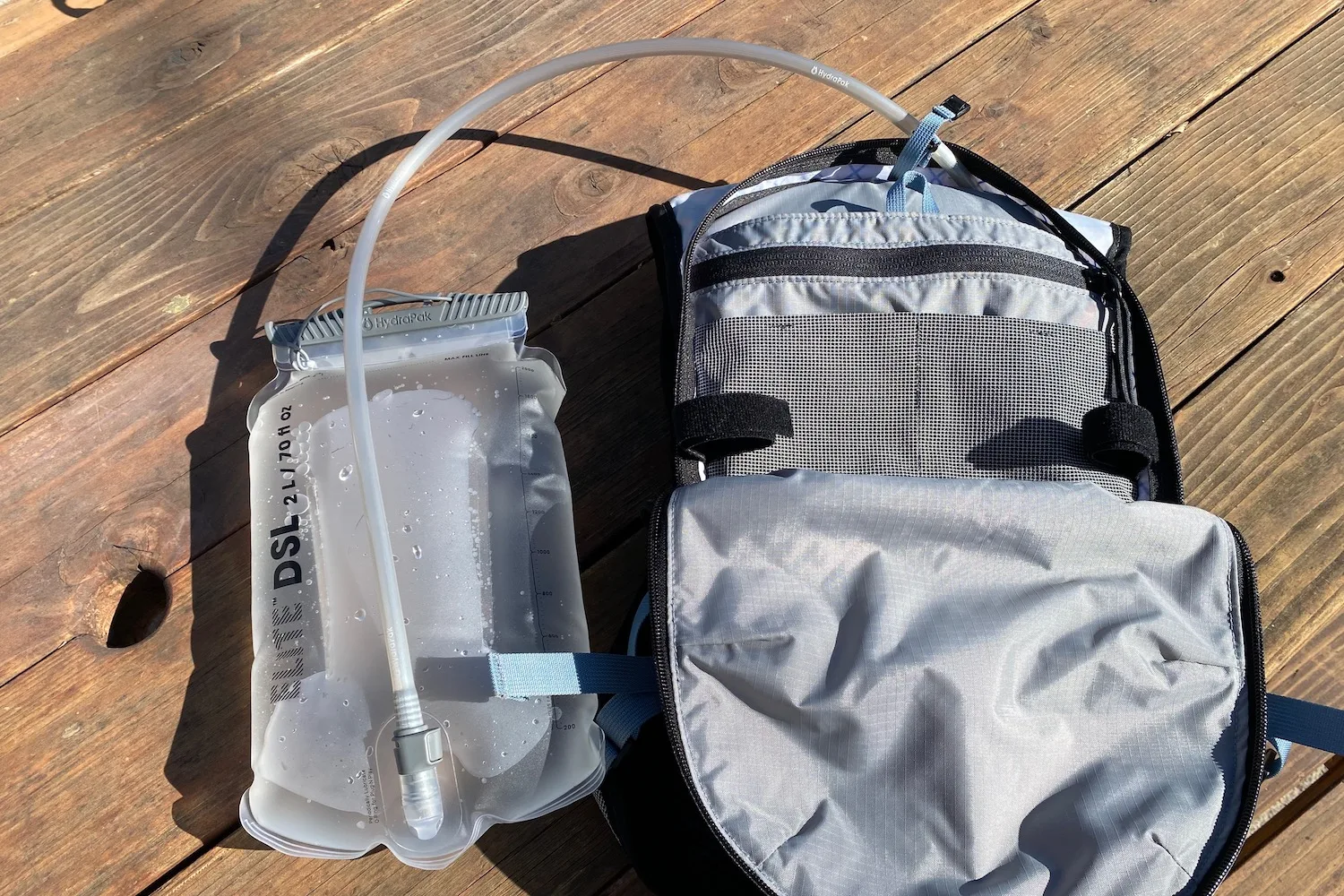
Water Capacity
One of the primary purposes of a hydration vest is hydration, of course, and models made for cycling almost always include a water bladder. In our experience, these bladders are most often manufactured by Hydrapak, with capacities ranging from 1.5 to 2 liters. You’ll obviously want to consider the amount of water you want/need to carry, and choose accordingly.
Water is also one of the heaviest things we carry with us when we ride. For reference, 2 liters is equal to 67.6 fluid ounces and weighs 2 kg (4.4 lbs.). 1.5 liters is equal to 52.9 ounces and weighs 1.5 kg (3.3 lbs.).
Most hydration vests feature an internal sleeve designed to hold the bladder closest to the rider’s back, keeping it separate from the rest of the pack’s contents. Most of these bladders feature wide openings with folding tops and slide systems to seal them.

Hoses and Nozzles
A hose runs from the bottom of the bladder, over the shoulder, outside the pack, and secures near the nozzle onto the front of the pack with a magnetic or clip attachment. Most nozzles have a bite valve. Although they may differ slightly in design, these nozzles all function in a similar manner. You simply pinch/bite the nozzle to open the valve and allow water to flow. Many nozzles also feature a locking mechanism, allowing them to be turned off to prevent leakage while riding or in transit. Most, but not all, hoses have a quick-connect fitting that attaches to the bladder, making it easier to remove and clean the bladder.
Many vests default to routing the hose over the right shoulder, where you would normally grab it to drink with your right hand. In this case, they are typically looped down and secured somehow to the left chest/shoulder strap, usually with a magnet or mechanical hose clip. Some, but not all, also allow for ambidextrous left or right hose routing. And the select few allow you to either route the hose from the top (conventional) or from the bottom along the lower edge of the shoulder strap. Many drop bar riders prefer this lower routing as it shortens the hose length (meaning less warm water in the hose, and grams saved) and may simply feel like a more natural position to drink.

Trimming a Hose to Length
It’s worth noting that the hoses on hydration packs can also be cut to the desired length. This may be beneficial for some riders, as the stock hose length may not be perfect for different builds and body sizes. Trimming a hose usually involves detaching the hose from the nozzle or the quick-connect fitting by the bladder, then cutting a small amount of hose off with a razor blade or sharp scissors. Remember to measure twice and cut once. We’ve found that it is generally best to start small and work your way up. You can always cut more off later.

Storage Capacity
In addition to water, hydration vests can usually carry some or all of your gear. There are numerous size options to choose from, of course, with some accommodating just the essentials and others capable of fitting significant amounts of clothing, tools, and food. What works best will vary depending on your needs and what you carry with you when you ride. With the models we tested ranging from 1.5 to 6 liters of storage, and many brands offering their packs in multiple sizes, it’s easy to find the size that works best for you.
Some riders may only want their hydration vest to carry more water, and for those folks, a pack with a low storage volume may be the best choice. Packs like the Evoc Hydro Pro 1.5, Velocio Hydration pack, CamelBak Chase Race 4, and the USWE Outlander XC 2L will carry your water plus a few other tools, snacks, and necessities. If you’re hoping to stuff a jacket, layer, extra gloves, and two pumps in your pack, then you’ll be better off looking into slightly larger packs like Deuter Rogla 5, High Above Supernatural, Restrap Race, or Apidura Racing Vests.

Front Pockets
The front pockets are also worth considering, as these provide additional storage and easy access to things like your phone, gels, and snacks. If you’re the type of rider who likes to pull out your phone for pictures or maps while riding, or who is constantly snacking while on the go, these pockets are great. Most hydration vests have front pockets, although the layouts and user-friendliness of these pockets vary somewhat between brands and pack models.

External Storage
Some hydration vests include straps or bungees to attach bulkier items to the outside of the pack. This may be particularly useful for riders who carry knee pads, rain jackets, or who like to climb without their helmet on. These external bungees can significantly increase the carrying capacity, allowing you to hold items that wouldn’t fit inside. Both the Deuter Rogla 5 and the High Above Supernatural have integrated bungees to carry things on the outside of the pack.
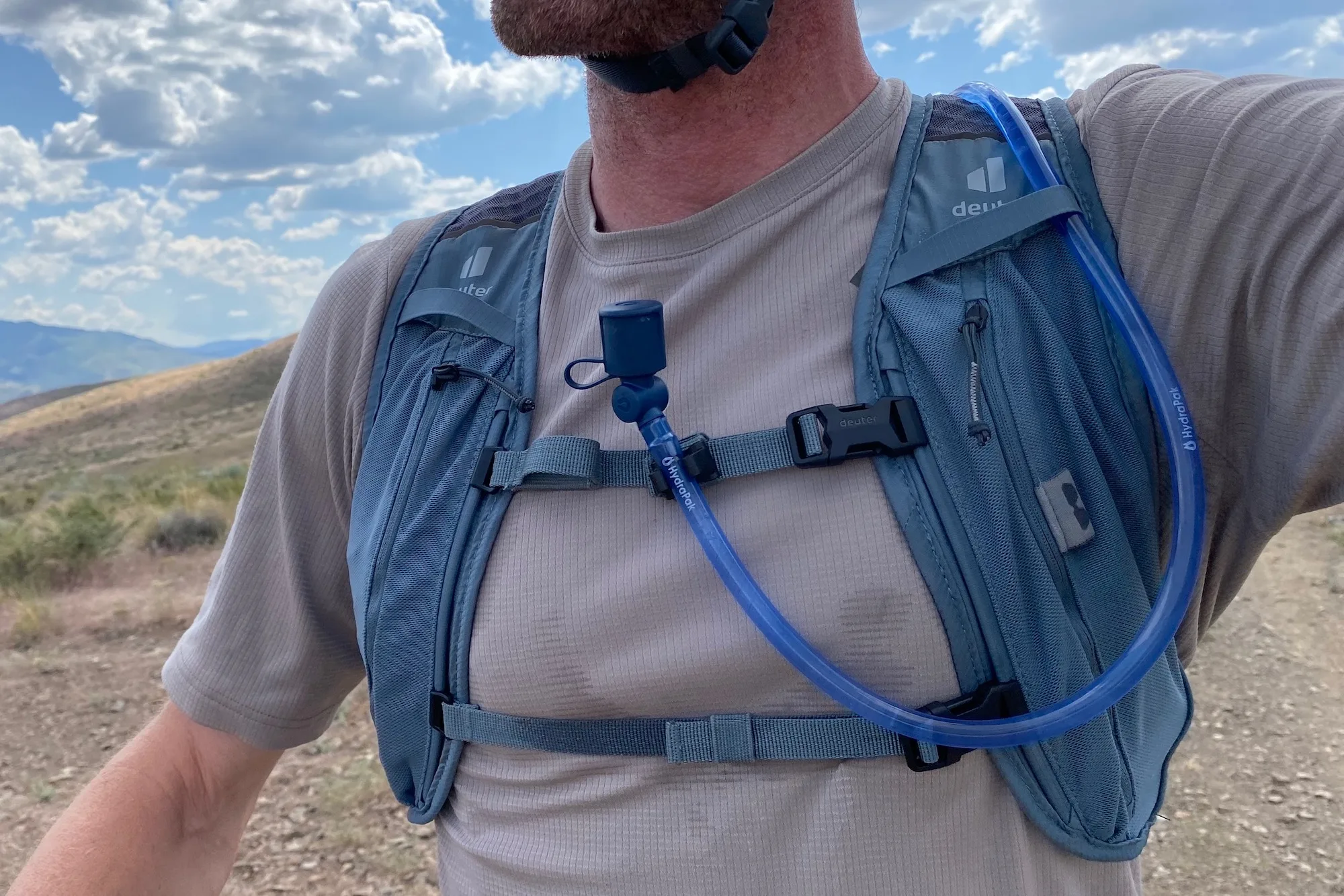
Fit and Sizing
Getting a properly fitting hydration pack is critical for your comfort and its stability. Too tight, and it can potentially restrict your breathing and cause discomfort over time. Too loose, and the pack can bounce around and be distracting. Most packs are adjustable within a specified range to accommodate varying body sizes, shapes, and changing water/gear loads. Some packs come in multiple sizes, while others are one-size-fits-most.
Most brands provide a sizing guide, allowing you to determine the correct size pack by taking measurements and referencing the size chart. For example, USWE lists a chest size fit range for each of its packs and includes a size guide that shows you how to measure your chest to determine your size. By measuring 360 degrees around your chest immediately below your breast, you should be able to determine your “chest circumference measurement.”

Adjustments
Most packs also feature several adjustments to optimize the fit for your body shape and size. These typically include straps across the chest, which can be tightened/loosened to adjust tension, and sometimes shifted vertically to optimize their position on the chest. Many packs also include adjustable side straps to account for different torso shapes and sizes. These types of adjustments are crucial for achieving the optimal snugness on the body, which maintains the pack’s stability without restricting breathing or causing discomfort.

Breathability
One of the biggest drawbacks to wearing a hydration vest — or strapping anything to your body, for that matter — is that it will always be hotter than not wearing one. While most brands and designs of hydration vests attempt to be breathable, there’s no denying the fact that all of them reduce airflow and increase sweatiness on the back and chest. Still, it’s a tradeoff that many people are willing to make to increase water carrying capacity and drinking convenience.
Every pack we tested uses some sort of air-permeable mesh material in the construction of the straps and back panel. These AirMesh — or similar — materials allow some air to pass through, letting speed-generated wind cool the body while allowing body heat and moisture to escape. These materials all work to some degree to promote breathability, but again, wearing a hydration vest is always hotter and sweatier than not wearing one at all.

Price & Value
Vest-style hydration packs are trending, and for good reason. With water bladders and hoses making it easy to drink and super stable designs that don’t distract or annoy while you ride, we’ve become huge fans of vest packs for cycling. Realistically, all of the models we tested are great in their own right, so finding the best option for you comes down to choosing the one that best suits your riding style, water and gear carrying needs, and budget.
Hydration vests are relatively simple things, but the models we recommend start just above $100 and climb up to $240. You don’t need to spend a ton on a vest, as our favorite model is the $130 EVOC Hydro Pro 1.5. This pack gets the job done and is plenty durable to boot. Likewise, the CamelBak Chase Race 4 ($126) is fairly simple but perfectly functional, and the Deuter Rogla 5 ($135) offers a bit more capacity at a similar price point.
As you climb the price ladder, the primary difference is the materials. A pack’s size has also plays a role, as larger packs require more materials. However, if you look at the packs included on our list, it’s the most durable and weatherproof models that have the highest price tags. Both the High Above SuperNatural ($240) and the Restrap Race ($235) use super-tough and highly weather-resistant fabrics, along with waterproof zippers. Whether it’s worth spending more for weather resistance will depend on where you live and ride, as most people will be just fine with less expensive options.
Related Content
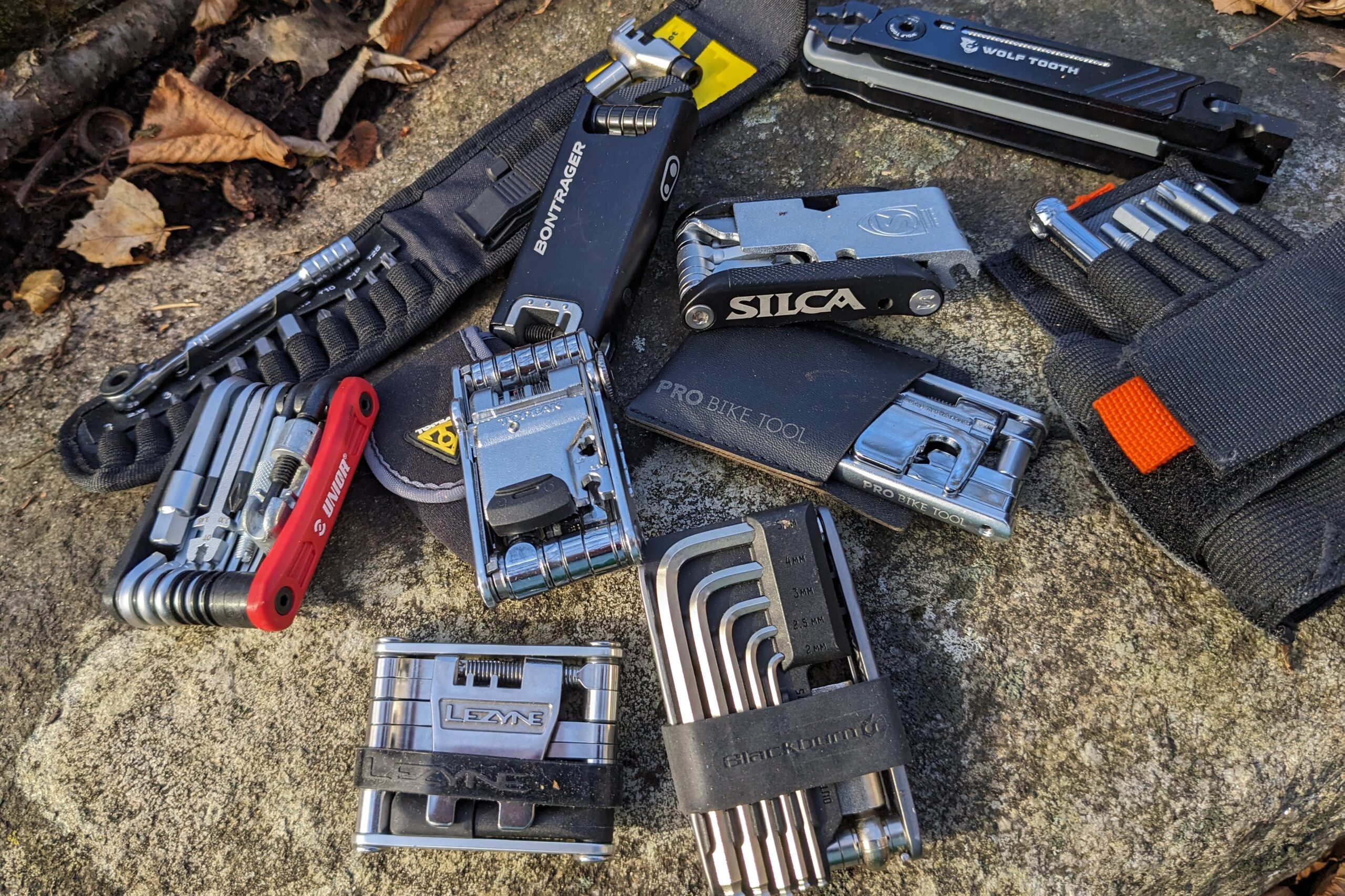
The Best Bike Multi-Tools of 2026
We tested 10 of the best bike multi-tools on the market to help you find the right model for your riding style and budget.

The Best Mountain Bike Jackets of 2026
We tested 15 great mountain bike jackets and have recommendations to keep you warm and dry as the temperature drops or rain starts to fall.


